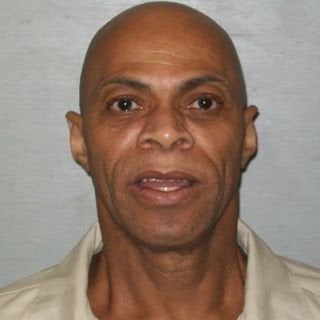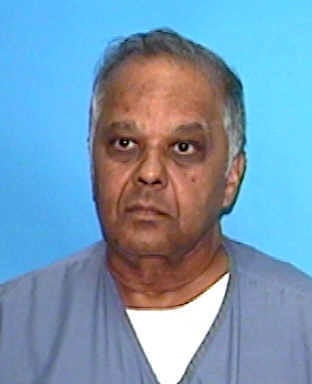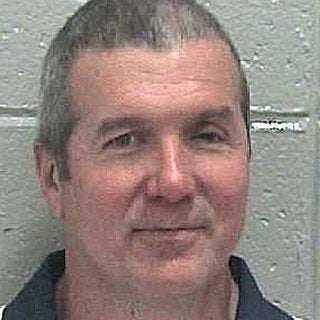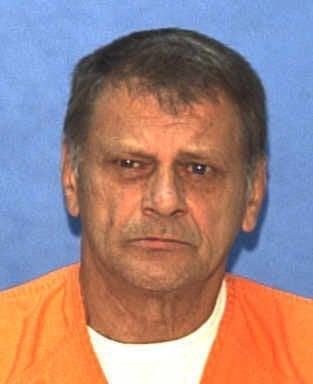Firing squads are a legal execution method once again in Utah.
A law signed Monday by Gov. Gary R. Herbert (R) establishes firing squads as a secondary execution method in the event the Department of Corrections can't obtain drugs for lethal injection.
Lethal injection remains the primary execution method for Utah and the 31 other U.S. states that allow the death penalty as a punishment for certain murders.
“Those who voiced opposition to this bill are primarily arguing against capital punishment in general and that decision has already been made in our state,” Marty Carpenter, spokesman for Herbert, said in an emailed statement. “We regret anyone ever commits the heinous crime of aggravated murder to merit the death penalty and we prefer to use our primary method of lethal injection when such a sentence is issued. However, when a jury makes the decision and a judge signs a death warrant, enforcing that lawful decision is the obligation of the executive branch.”
The bill easily passed both chambers of the state legislature. Herbert deliberated for about a week before he signed it.
"It's not our preference, but we need to have a fallback," Herbert said during a news conference last week, according to NBC News.
Utah was the last state to execute an inmate by firing squad. On Friday, the governor's staff met with Randy Gardner, whose brother, Ronnie Lee Gardner, was the last Utah inmate executed by firing squad in 2010, The Associated Press reported. Randy Gardner reportedly told the governor's staff he opposed bringing back the firing squad and recalled the pain of seeing his brother's body "riddled with bullet holes."
Faced with dwindling supplies of lethal injection drugs, botched executions and legal challenges to the controversial protocol, a growing number of states are looking to legalize alternative execution methods.
Lawmakers in Oklahoma -- the only other state to allow firing squads as an execution method -- are considering a new form of the gas chamber that hasn't been used in a state-sanctioned execution anywhere else in the world.
In February, an Alabama lawmaker drafted a bill that would make firing squads a legal execution method in that state.
Eight other states have the electric chair as an alternative protocol, four have the gas chamber, and three permit hanging, according to the Death Penalty Information Center.
Before You Go

STATE: South Carolina
RELEASED IN 2002
In 1982, Dorothy Edwards of Greenwood, South Carolina, an elderly white woman beloved by her community, was brutally murdered and raped in her home. Edwards' neighbor offered up Elmore, her handyman, as the perpetrator of the crime, even as he maintained his innocence. Elmore was arrested, went to trial 82 days later, and received a death sentence -- a conviction that he received three times as appeal courts overturned each verdict. The case was riddled with bad (even planted) evidence, an incompetent defense, a tainted crime scene, and police coverups. He spent 29 years on death row until his defense argued that he was mentally disabled and legally could not be executed, so he was reduced to a life sentence. In 2002 -- 29 years later -- he pled guilty to murder in exchange for release.
Check out CNN's original series "Death Row Stories" (Sundays 9pm ET/PT) for a deeper look into this case.

STATE: Florida
COMMUTED TO LIFE SENTENCE IN 2002
One-time millionaire and business magnate Kris Maharaj was convicted on two counts of murder in 1987. The case was plagued by covered-up evidence, false eyewitness accounts, and a shoddy defense (who didn't call any of his many witnesses to the stand as a "tactical" maneuver). Clive Stafford Smith has worked on this case for years, and in 2002, succeeded in commuting Maharaj’s death sentence to a life term following serious misconduct on the part of the judge and prosecution. Smith continues to fight for Maharaj's release, saying: “It is unfathomable to most rational people that the US Supreme Court says that innocence is not a reason to set a prisoner free. That Kris has spent 10,000 days in prison for a crime he did not commit is little more than legal kidnapping.”
Check out CNN's original series "Death Row Stories" (Sundays 9pm ET/PT) for a deeper look into this case.

STATE: Florida
EXECUTED: 9/28/11
LAST MEAL: Fried chicken breast, white rice, garlic toast, peach cobbler and a Coca-Cola.
Manuel Valle killed a police officer in Coral Gables, Florida, in 1978 after being stopped for a traffic violation. In the dissenting opinion of Valle v. Florida, Supreme Court Justice Stephen G. Breyer stated that the inmate's long stay on death row amounted to cruel and unusual punishment. He said, "I have little doubt about the cruelty of so long a period of incarceration under sentence of death."

STATE: Georgia
EXECUTED: 9/16/08
LAST MEAL: Did not request a last meal. Ate regular prison meal of baked fish, peas, cole slaw, carrots, cheese grits, bun, fruit juice and chocolate cake.
Jack Alderman was convicted in 1975 of killing his wife, Barbara Jean Alderman. At the time of his execution, he was the longest-serving death row prisoner who had been executed in the United States.

STATE: Texas
EXECUTED: 6/15/2010
LAST MEAL: Four eggs, four chicken drumsticks, salsa, four jalapeno peppers, lettuce, tortillas, hashbrowns, garlic bread, two pork chops, white and yellow grated cheese, sliced onions and tomatoes, a pitcher of milk and a vanilla shake.
In May 1978, Powell fatally shot 26-year-old Austin police officer Ralph Ablanedo 10 times after he and his girlfriend were pulled over for missing a rear license plate. The two were on the way to a drug deal at the time of the crime. Opponents to his execution cited his exemplary behavior in prison and argued that he was no longer a threat to society, which is a legal requirement for capital punishment. Thirty-one years, three trials, and multiple appeals later, he died by lethal injection.
He spent the longest time on death row of anyone in Texas since the state resumed death penalty executions in 1982.

STATE: Florida
EXECUTED: Died of brain tumor in 2013
In 1974, Gary Alvord was sentenced to death for strangling three women in their home in Tampa, Florida after he escaped from a mental hospital. Although Alvord faced execution several times, his history of mental illness prevented the sentence from being carried out. Last year, after 43 years on death row, he died of natural causes. In the time he spent awaiting execution, 74 other inmates were sent to their deaths. Bill Sheppard, who represented Alvord, has said: “Gary is a product of a sick system. He was a living example of why we should not have the death penalty.... I would love for the state of Florida to tell us how much money they wasted trying to kill a guy they couldn't kill."

STATE: Missouri
CHARGES DISMISSED IN 2013
Reginald Griffin was implicated in the 1983 stabbing death of a fellow inmate at the Moberly Correctional Center in Moberly, Missouri, where he was serving time for an armed assault conviction. He along with two other inmates were charged with capital murder in 1987. There was no physical evidence linking Griffin to the crime, and in subsequent trials, the two inmates who served as witnesses for the prosecution in were offered benefits to testify. In 2011, the Missouri Supreme Court found that the state had withheld critical evidence and overturned Griffin's conviction. In 2013, all charges were dismissed. Upon his release, Cindy Short, one of his attorneys, said: "We humans are flawed, and those flaws have led to wrongful arrests, wrongful convictions and, unfortunately, this situation where time and time again you see prosecutors holding onto cases, even when evidence of innocence is clear."

STATE: Oklahoma
EXECUTED: 5/1/12
LAST MEAL: Kentucky Fried Chicken’s crispy two breast and one wing meal with potato wedges and baked beans, a chicken thigh, apple turnover, two biscuits and honey, salt, pepper and ketchup.
In 1975, Michael Selsor shot gas-station clerk Clayton Chandler six times during a robbery in Tulsa, Oklahoma along with his accomplice, Richard Eugene Dodson. Although he was tried by a jury and sentenced to death in 1976, the U.S. Supreme Court and Oklahoma Court of Criminal Appeals ruled the death penalty unconstitutional later that year. Selsor's conviction was overturned by the U.S. Tenth Circuit Court of Appeals in 1996; however, his 1998 retrial ended in another death sentence. After 36 years, Selsor was executed in Oklahoma by lethal injection.
